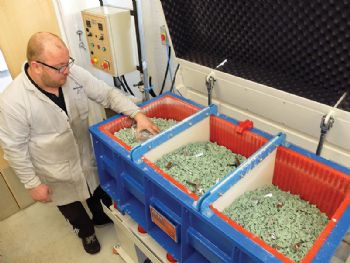
Bowmill Engineering provides high-end manufacturing solutions for the aerospace sector from several factory units on the Nuffield Industrial Estate in Poole (
www.bowmill.co.uk).
Machined parts are carefully deburred in the finishing and assembly department, where a PDJ Vibro EVT-320 vibratory trough was installed in April, next to a vibratory bowl machine that was operating at full capacity.
Along with rising production rates, part dimensions have been increasing at Bowmill, which needed the ability to handle items up to 385 x 315 x 70mm. A part of this size would require a very large circular bowl, so Bowmill opted for a rectangular trough vibrator.
PDJ Vibro (
www.vibratoryfinishing.co.uk) was chosen as the supplier for a number of reasons: its price was competitive, it was prepared to let Bowmill part-exchange a vibratory bowl, and the trough was available ex stock while other potential suppliers were quoting eight to 12 weeks’ delivery.
To help keep track of high-value components during finishing and to allow parts of different sizes to be processed simultaneously, the trough was supplied with two partitions (creating three separate finishing compartments).
This allows one or two of the largest components, eight to 10 medium-size components and up to 50 smaller components to be finished at the same time.
The extraction of parts is assisted by a ‘reverse’ button that makes the media tumble in the opposite direction, encouraging components to rise to the surface.